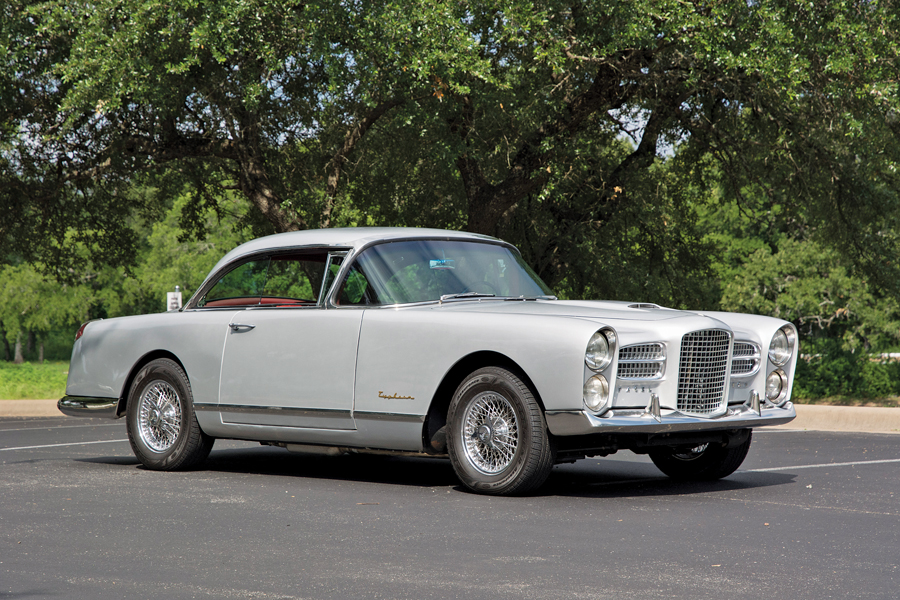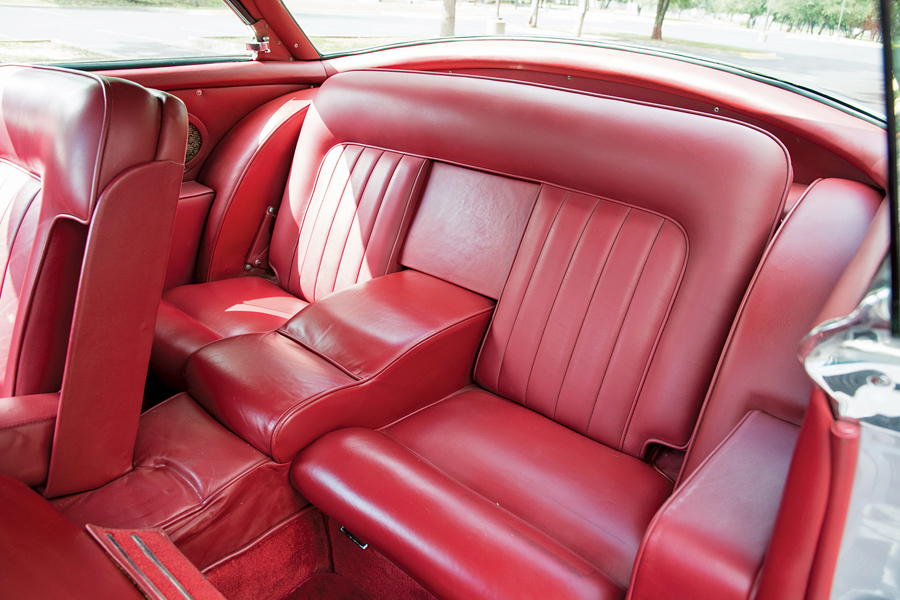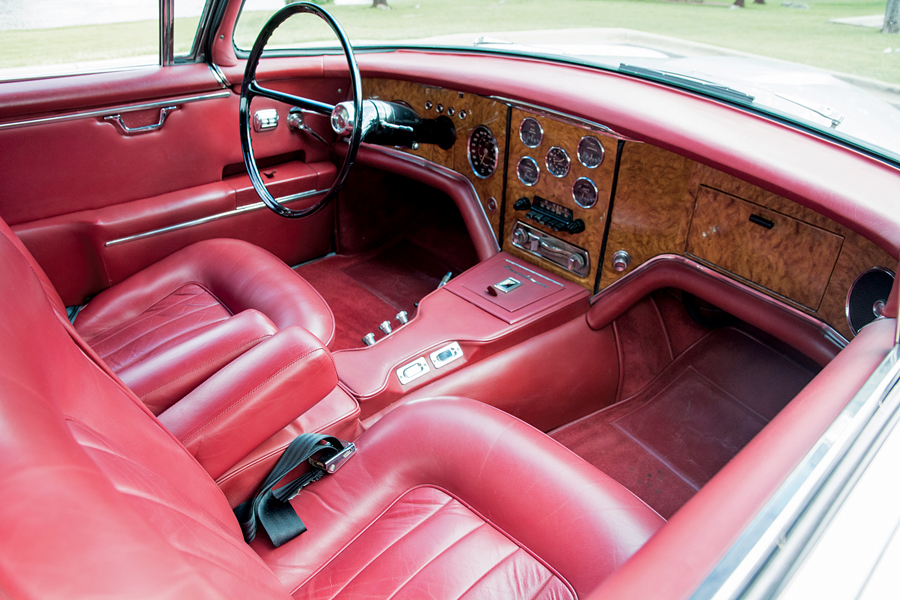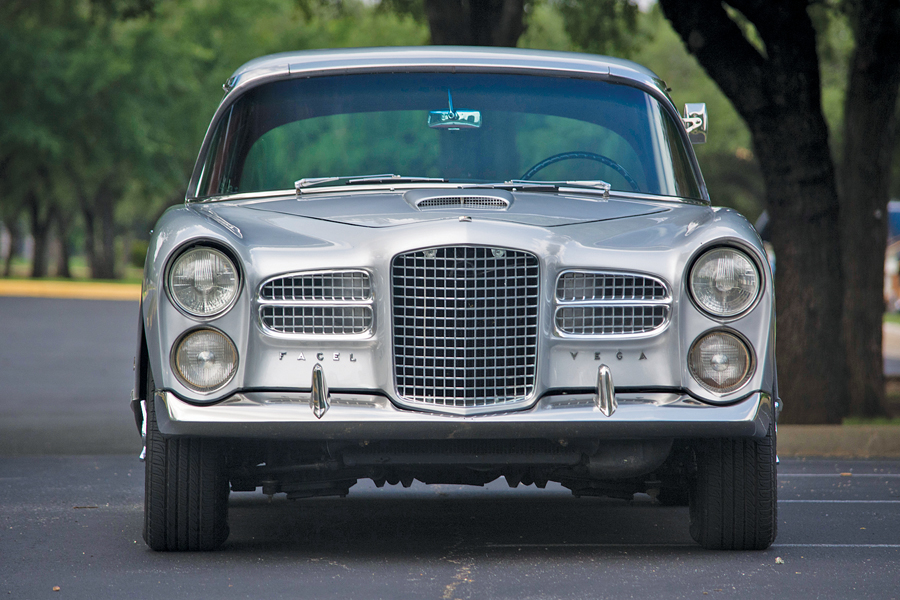SCM Analysis
Detailing
| Vehicle: | 1958 Facel Vega FVS Series 4 |
| Years Produced: | 1957–58 |
| Number Produced: | 67 (FV4) |
| Original List Price: | $9,000 (approximate) |
| SCM Valuation: | $233,000 |
| Tune Up Cost: | $750 |
| Chassis Number Location: | Engine compartment bulkhead |
| Club Info: | Amicale Facel Vega |
| Website: | http://www.facel-vega.asso.fr |
| Alternatives: | 1964–67 Lancia Flaminia Pinin Farina coupe, 1955–57 Alfa Romeo 1900 CSS, 1956 Chrysler 300B |
| Investment Grade: | B |
This car, Lot 37, sold for $190,000, including buyer’s premium, at Motostalgia’s McPherson Collection Auction in Waxahachie, TX, on October 14, 2017.
Once again, I will begin a profile with an admission — I have always loved Facel Vegas and always will. Having said that, I will also confess that sometimes they confuse me. They are very expensive to restore properly, and only in the past decade or so did owners make the investment that such work required. They also need specialists who know how to properly re-create the original finishes. As a result, they have also come to exemplify the current market, where the price realized at an auction sale can vary quite a bit between examples.
A plush, costly hybrid GT car
The Facel Vega FV cars were very expensive. They cost nearly $9,000 when $5,200 would buy a Cadillac Series 62 Coupe de Ville or a Chrysler 300B.
Rarity and glamour do have a price, and the Facel was in many ways the perfect realization of the ”hybrid” GT car — one with real American push that you could use in more than a straight line. These cars were equally at home in Hollywood or London as in Cannes.
With its Lance Macklin-fettled chassis, the Facel FV was what the Chrysler Ghia concept cars of the ’50s could have been if Italian engineers could have worked underneath while the stylists worked up top. For that matter, it would have been a great idea for Macklin to have come over to Michigan to work his magic on the Chrysler 300 letter cars, another of my favorite cars of the decade.
In any event, the combination of the effortless power of the engine with the clean, elegant and dramatic coachwork and handling well above the average level for a big, comfortable car makes the Facel an almost unmatchable vehicle.
It does have a notable weakness, again shared with many fast cars of the decade — braking. Considering that engineers had been working since the invention of the motorcar at making them go faster but only came around to thinking about how to make them stop in the late ’50s, it’s not surprising.
A little red mist on the block
This sale result is an interesting one. Ultimately, in my view, it is perhaps not representative of what might happen elsewhere.
The Motostalgia auction had an almost foolproof format. The auction had 65 cars from a single collection, offered without reserve, in their display setting “at home.”
This is usually a recipe for great result, as bidders are inspired by the total collection. This is similar to the inside of a furniture showroom, where attractive room settings make you imagine the side table you’re about to buy sitting in your home with the sofa, rug, side chairs and art — even though you won’t take home most of those fixtures.
The collection was also a very eclectic assortment of cars. There were muscle cars next to European sports cars next to a Japanese Domestic Market luxo barge — when was the last time you saw a Nissan President? With pickup trucks, an LT-1 conversion Aston Martin Lagonda and a Zimmer Quicksilver in the mix, the idea that practically everyone who showed up might find something to put in their trailer loomed large.
Add to that the idea that at no reserve, everything is bound to go at a bargain price, right? Well, no.
Bargain hunters can get caught up in the emotion of bidding as easily as Mr. Open Checkbook, and retail-plus prices are frequently paid. This sale wasn’t quite the feeding frenzy that RM Sotheby’s now-notorious Duemila Ruote auction in Milan, Italy, was last year, but our subject Facel Vega is an example of bidder enthusiasm. There were some bargains to be had — just not here.
The SCM reporter on the scene described the car as an “older restoration in good condition.” I don’t disagree with that assessment, as it is clear from the images that the car was slowly unraveling.
Clearly visible were a number of problems. They include shrinkage in the carpets, worn door rubber, odd random spacing of the letters “F A C E L” on the front fascia, some slightly flattened side bright trim on the left side and mismatching in the color of the paint from panel to panel on the right side.
In addition, a thoroughly “as driven” presentation under the hood and very incongruous modern, fat Goodyear Assurance round-shouldered tires didn’t inspire confidence that a specialist had maintained or prepared the Facel Vega car.
Of course, the interesting statement in the catalog description of the “superb wooden veneers” also drew attention. One of the neatest things about all about these Facel Vega cars is the exquisite hand-painted wood-grain pattern on the metal dashboard. There was also no mention of tools or toolkits.
The ID tag also raised a question, as the combination of letters and numbers is unlike those of any I’ve ever seen or that appear in the excellent Facel Vega Grand Luxe Sportif, a must-own read by U.K. motoring writer Martin Buckley.
A nice car sold well
On an estimate of $150,000 to $200,000, the car landed at halfway on the hammer, just under high estimate with premium.
Compared with other recent auction sales of Facel Vegas of this era, this car sold high for condition.
The example sold at RM Sotheby’s Phoenix in January 2017 (SCM# 6816827) was a stunning car and from the same model year as our subject. It was then a five-year-old restoration, with fitted luggage and very well maintained. It sold for $247,500 — and I don’t believe that $57,500 could make our subject car the RM Sotheby’s car.
Therefore, I must come down squarely in the bien vendu column. That’s “well sold” for those of us west of the Eiffel Tower. ♦
(Introductory description courtesy of Motostalgia.)



